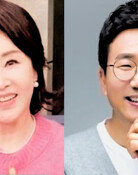seducing wife
seducing wife
Posted November. 11, 2021 07:24,
Updated November. 11, 2021 07:24

It is difficult to find Western portraits of a smiling model, one big reason for which may be attributable to the laboriousness of smiling and posing still for a portrait for a long time. Yet the woman in the painting is flashing a bright smile, showing off joy and happiness, with glowing cheek and shining eyes. Her smile is not hidden behind a black veil. Who is she, and why is she wearing such a happy face?
Alexander Roslin was a Swedish portrait painter who worked in Paris during his mid-30s. His portraits were immensely well received by the European nobility for his intuitive psychological portrayal and skillful representation of costume. Although he was a foreigner, Roslin was chosen as a member of the French Art Academy and awarded a pension and a free apartment in the Louvre.
Roslin painted this artwork at 50 when his fame was at its highest, and the model was his wife, Marie Suzanne. His 34-year-old French wife is wearing exuberant costume and a black veil on her head. A black veil is usually considered as a symbol for funeral, but in the painting, it is used to playfully seduce her husband. Actually, Marie Suzanne herself was a career painter herself. The two met first in 1759, at a workroom of Suzanne’s teacher. Then a 25-year-old fledgling painter, Marie Suzanne fell in love in the first sight with Roslin, who was 16 years senior to her. They wanted to get married, but Suzanne’s family fiercely disapproved of their marriage, for Roslin was an impoverished foreigner and a Protestant. However, Suzanne was an assertive and confident woman. After declining proposals of suitors arranged by relatives, Marie Suzanne married a man she truly loved. Roslin and Suzanne had six children and worked on drawings together. Suzanne was also chosen as a member of the French Art Academy, leading a successful career. Roslin highly praised his wife’s pastel paintings, saying her drawings were of much better quality than his. May be that is the reason why Marie Suzanne’s eyes and expressions reveal a blissful joy.
Suzanne’s happiness might have provoked the Divine jealousy. Sadly, she died of cancer four years after the painting was completed. Would Roslin have dared to imagine that his wife’s black veil that was used to entice him, in fact, heralded her own funeral?







